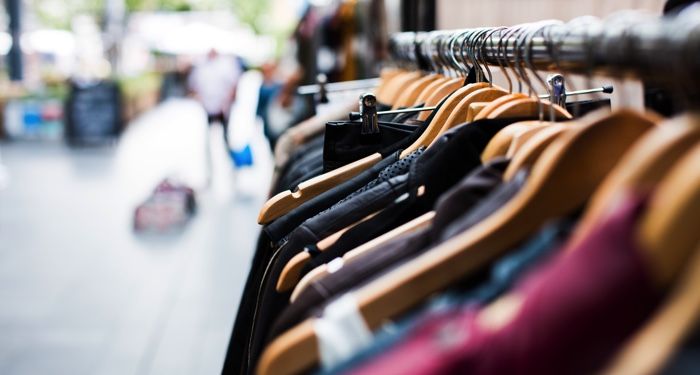
10 Books to Help You Explore Slow and Sustainable Fashion
The older I’ve grown, the more disposable my wardrobe has come to feel.
First, I stopped investing in my wardrobe because of #MomLife. I used my maternity wear for as long as possible and, when that became impossible, I just wore schlumpy shit until it fell apart.
Then, because of my persistent weight gain, my shopping habits devolved further. I mean, it feels impossible to not be wasteful when you keep growing out of your old clothes. And why bother investing in quality pieces if you don’t know what your weight will be a year from now?
And finally, I hit rock bottom because of my reclusive lifestyle. I’m a full-time work-at-home freelancer who was even more isolated by the pandemic. Why not just wear cheap-ass jeggings purchased in bulk off Amazon? At this point, my family mocks me for wearing day clothes that look identical to pajamas.
At some point in the past two years, however, I learned embroidery, and I started to get excited about embellishing my clothing and accessories. And then, I read Aja Barber’s Consumed, which taught me how my shopping habits — and even my donation habits — were hurting the world. And then it all started to come together.
As a larger woman with a not-terribly-huge income, it can be difficult to build a sustainable wardrobe. For one, a lot of ethical clothing companies charge more than your average fast fashion company, for obvious reasons.
But worse than that is the fact that the fashion industry as a whole has been slow to adopt inclusive sizing, catering instead to straight-sized bodies. What’s a curvy-ass woman with a small budget to do?
I’m hoping the books below will at least give you a sense of why fast fashion is so problematic, and why trying to dress more sustainably is so important. In addition, some of these books on sustainable fashion will give you great ideas for making your clothes last longer…as long as you’re willing to get a bit DIY. And if you’re feeling extra ambitious, you might be inspired to make some duds from scratch.
Ready to change the way you build your wardrobe?
Books on Sustainable Fashion and the Slow Fashion Movement
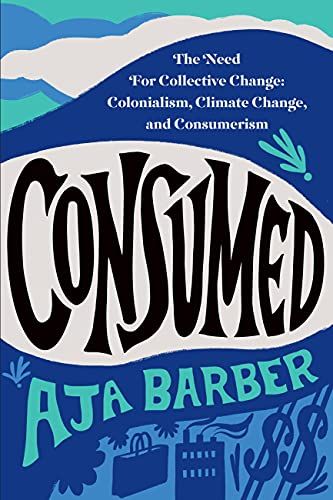
Consumed by Aja Barber
I already mentioned this book up above, but I’m sticking it here, too. Barber’s book gave me an in-depth look at the negative impact fast fashion is having on people, on the environment, and on our wallets. It then explored how we might engage in fashion (and consumption in general) in a way that’s more sustainable and less terrible. As far as primers on consumerism and fast fashion go, this one’s a great place to start.
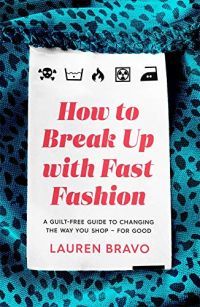
How to Break Up with Fast Fashion by Lauren Bravo
Bravo’s book is an ideal complement to Barber’s. In it, Bravo gives the lowdown on why fast fashion is terrible, encourages readers to shop more sustainably, and shares tips on how we might all fall back in love with our wardrobes, even if they need a refresh.
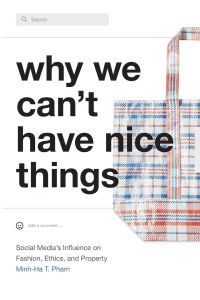
Why We Can’t Have Nice Things by Minh-Ha T. Pham
If you’re still not convinced, this book goes deeper into social media’s influence on fashion, ethics, and property (to quote the subtitle). This one hones in on ethical fashion, intellectual property, and the colonial legacies of cultural properties. It’s a bit different from the other titles on this list, but I think it’s a fascinating and essential look at this one particular aspect of the fashion industry.
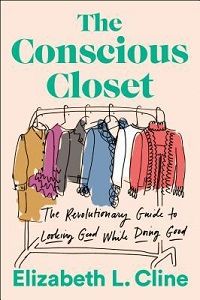
The Conscious Closet by Elizabeth L. Cline
Once you’ve been convinced that you need to change your ways, you might wonder how best to act responsibly while still looking good. That’s where Cline comes in. In addition to sharing the whys behind sustainable fashion, she gives suggestions for donating, swapping, or selling the clothes you no longer love and then tells you how to build a more ethical capsule wardrobe.
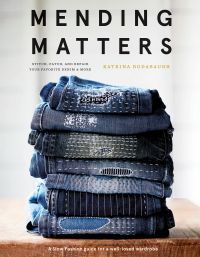
Mending Matters by Katrina Rodabaugh
As I mentioned in my intro, once the pandemic allowed me to unapologetically abandon the constraints of hard pants, my entire wardrobe shifted to revolve around leggings and jeggings purchased off Amazon. But then I started to feel guilty. Because my jeggings are so cheaply made, they’re already falling apart. Enter this book, which has me excited to mend my cheap-ass jeggings and participate more fully in slow and sustainable fashion. The techniques offered in this book are simple and accessible and fun and, also, there are instructions for a denim market tote I can’t wait to try.
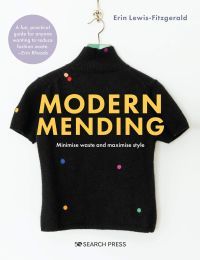
Modern Mending by Erin Lewis-Fitzgerald
Because I’m a larger woman who finds it difficult to access sustainable fashion through ethical clothing companies and thrifting, I’m coming to embrace how I might find more joy in mending, giving my clothes new life. The rest of the books on this list will reflect that DIY attitude. At the same time, I am a beginner when it comes to needlework, so I’m attempting to recommend books that are more accessible to beginners. Like Mending Matters, Modern Mending shares techniques for mending your clothes in ways that were meant to be seen. Said techniques include stitching, darning, patching, needle felting, and machine darning.
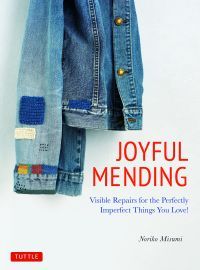
Joyful Mending by Noriko Misumi
This one was another recent read for me. I first read about sashiko, traditional Japanese stitchwork meant to be both decorative and functional, in Rodabaugh’s book. In Joyful Mending, Misumi takes it to the next level, also sharing additional sewing, darning, felting, and crocheting techniques. She also encourages readers to embrace Wabi Sabi, an appreciation of old and imperfect things (which I suppose is a perfect description of my wardrobe as it exists today).
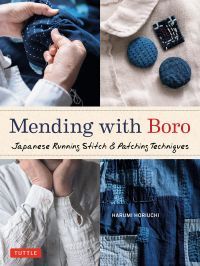
Mending with Boro by Harumi Horiuchi
Boro goes hand-in-hand with sashiko, so this book is a great next step from Joyful Mending. In this forthcoming book, out in March, Horiuchi shows readers how to use this straight stitch to mend everything from old clothing to cloth bags to woolen socks. Muaaahahahahaha! I may never replace my jeggings again!
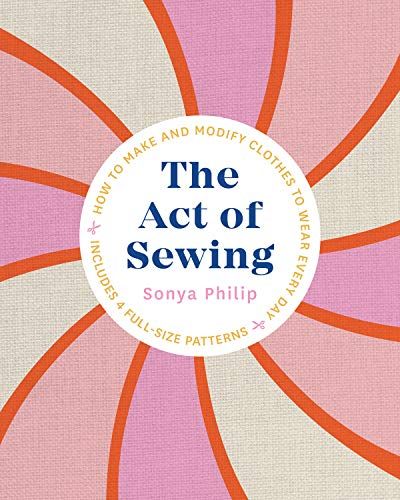
The Act of Sewing by Sonya Philip
Let’s take things up a notch, though I’ll be the first to admit that I’m not there yet. Making clothes from scratch!? I can’t do that! But it does seem to be the natural progression, no? Particularly when you’re a person who struggles to find cute clothing in your size. In this book, Philip explains the basic concepts of sewing and construction and shares four basic clothing patterns you can then adjust to your body type. Color me intimidated. But still, this is one of the few books out there that feels accessible to all body types, so let’s say that this is my stretch goal.
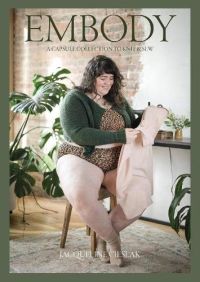
Embody: A Capsule Collection to Knit & Sew by Jacqueline Cieslak
And here’s another size-inclusive DIY book for good measure. This book shares a ton of patterns, along with instructions on how to adjust each design to fit your body type. Again, I’ll need to work my way up to this one, but we’ll get there…
Of course, those who wear expanded sizes shouldn’t be required to make their own damn clothes from scratch in order to have a wardrobe that looks and feels good. The fashion industry needs to look past its fatphobia and incorporate truly inclusive sizing, and that includes the ethical fashion industry.
Luckily, there are folks out there who are advocating for inclusive sizing, and who share their own resources for sustainable fashion that fits who they are. You can find many of them on Instagram. Among my favorites are Cat Polivoda, the founder of CAKE, a plus-size retail shop; Alex of Shiny by Nature, a colorful, size-inclusive fashion brand; Marielle Elizabeth, who shares fat-positive content and the lowdown on plus-size, ethical fashion brands; Lydia Morrow, who specializes in creating underwear for all sizes and genders; and Lydia Okello, whose colorful outfits just make me smile, and who speaks widely on the need for inclusivity in sustainable fashion.
















